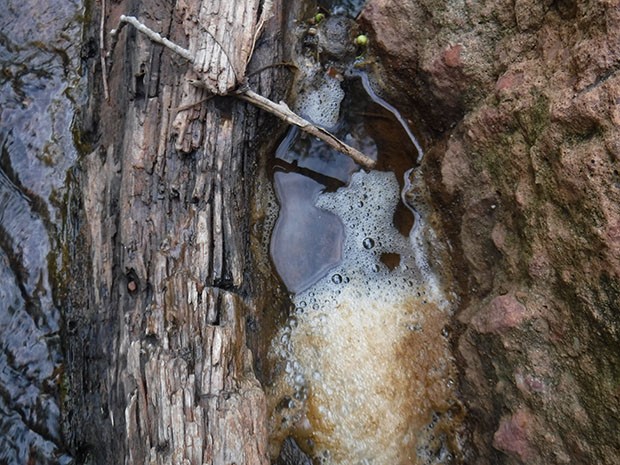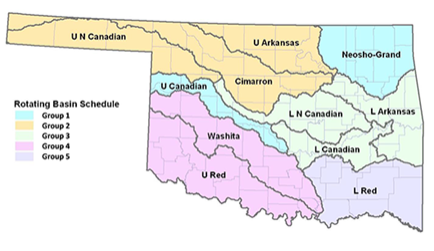Bacteria Data

Introduction and Problem
The State of Oklahoma currently has over 7,500 stream miles that are listed on 303(d) list for both E. coli and enterococci for impairment per the 2018 Integrated Report from the Oklahoma Department of Environmental Quality (ODEQ) and Water Resources Board (OWRB). Recently, state resources needed to routinely monitor streams for bacteria have been limited, thus impairment status is unknown for many of the listed streams. The Oklahoma Water Survey is working in conjunction with the Oklahoma Conservation Commission and Oklahoma Department of Environmental Quality to routinely monitor impaired stream sites in selected regions.
Project Scope
The Oklahoma Water Survey (OWS) sampled 23 streams in the 2018 recreational season that are listed on the 303(d) impaired list, and 21 streams in 2019 (data available for download below Fig. 1) as determined by the State of Oklahoma Primary Body Contact Recreation (PBCR) beneficial use, for both E. coli and enterococci ten times during the recreational season (May 1 – September 30). Impairment criteria for PBCR is determined by calculating a geometric mean of a minimum of ten (10) samples, and attained E. coli does not exceed 126 colonies/100mL, or enterococci does not exceed 33 colonies/100mL. The selected stream sampling locations coincide with the Oklahoma Conservation Commission’s (OCC) statewide rotating basin monitoring program for wadeable smaller-order streams (Figure 1). Monitoring work will provide necessary data to determine impairment status of 303(d)-listed streams, and potentially remove some streams from impaired status. The OWS continues to sample approximately 20-25 streams in the each recreation season in continuation and support of assessing impairment status in legacy stream sites. For more information regarding the data or project, please contact us!
Figure 1. Oklahoma Conservation Commission Rotating Basin Monitoring Program Map.
Stream Data


